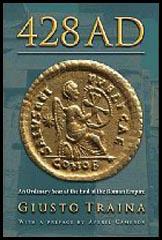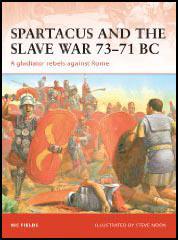Spartacus Review
Volume 35: 26th July, 2009
Roman Empire

Title: 428 AD
Author: Giusto Traina
Editor:
Publisher: Princeton University Press
Price: £16.95
Bookshop: Amazon
Spartacus Website: End of the Roman Empire
Category:
This is a sweeping tour of the Mediterranean world from the Atlantic to Persia during the last half-century of the Roman Empire. By focusing on a single year not overshadowed by an epochal event, 428 AD provides a truly fresh look at a civilization in the midst of enormous change--as Christianity takes hold in rural areas across the empire, as western Roman provinces fall away from those in the Byzantine east, and as power shifts from Rome to Constantinople. Retracing the kind of route a contemporary gazetteer might have taken, Giusto Traina describes the empire's people, places, and events in all their simultaneous richness and variety. The result is an original snapshot of a fraying Roman world on the edge of the medieval era. Readers meet many important figures, including the Roman general Flavius Dionysius as he encounters a delegation from Persia after the Sassanids annex Armenia; the Christian ascetic Simeon Stylites as he stands and preaches atop his column near Antioch; the eastern Roman emperor Theodosius II as he prepares to commission his legal code; and Genseric as he is elected king of the Vandals and begins to turn his people into a formidable power. We are also introduced to Pulcheria, the powerful sister of Theodosius, and Galla Placidia, the queen mother of the western empire, as well as Augustine, Pope Celestine I, and nine-year-old Roman emperor Valentinian III.

Title: Spartacus and the Slave War
Author: Nic Fields
Editor:
Publisher: Osprey
Price: £14.99
Bookshop: Amazon
Spartacus Website:
Category:
In the year 73 BC, Spartacus broke out of a gladiatorial training school and formed an army of runaway slaves and people with little to lose. This army defeated two Roman armies and attacked several cities. Terrified lest the revolt spread, the government in Rome assigned Crassus and Pompey to crush to rebellion. They cornered Spartacus and brought him to battle near the source of the river Silarus. During the battle, Spartacus was killed and his army defeated. Crassus crucified 6,000 prisoners as an example to others who might think of revolt. Written by Nic Fields and illustrated by Steven Noon, this campaign title brings to life the story of Rome's most famous revolt and the ex-gladiator who led it.
